Your Cart is Empty
Free and Fast Shipping | 30 Day Money Back Guarantee
Free and Fast Shipping | 30 Day Money Back Guarantee
Free and Fast Shipping | 30 Day Money Back Guarantee
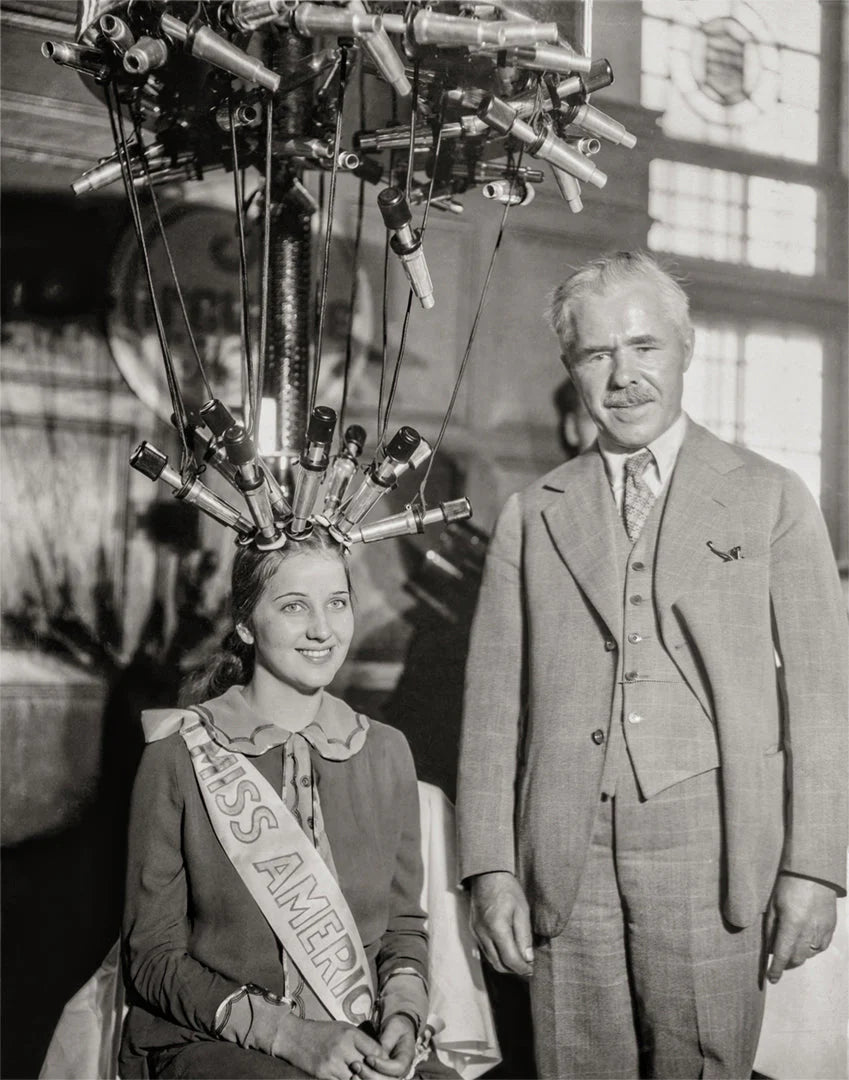
17 min read
Hairstyles are more than just aesthetic choices; they are a reflection of the times, cultural movements, and individual personalities. From the bob cuts of the roaring '20s to the flowing locks of the '60s and the wild textures of the '80s, hairstyles have evolved significantly through history. In this blog post, we'll take a stroll down memory lane, exploring some of the most iconic hairstyles that have left an indelible mark on the world.
Haircuts and hairstyles from 1900 to 1910 were predominantly influenced by the Edwardian era, named after King Edward VII of England. This was a time when fashion and hairstyles were elaborate, intricate, and often required considerable time and effort to maintain. Here are some key features of hairstyles from that period:
Gibson Girl Look
The Gibson Girl look emerged in the late 19th and early 20th centuries as the embodiment of the idealized American woman. Created by artist Charles Dana Gibson, the Gibson Girl was not just a fashion trend but a social phenomenon that represented a new, more modern woman. She was intelligent, independent, confident, and yet still feminine. She captured the spirit of the age and became a cultural icon for both men and women.
The Gibson Girl hairstyle was a critical part of the look, representing both sophistication and practicality. The hair was often swept back and up from the face, gathered into a high pompadour or loose chignon, providing both elegance and ease of movement. Soft waves and curls framed the face, adding a touch of femininity.
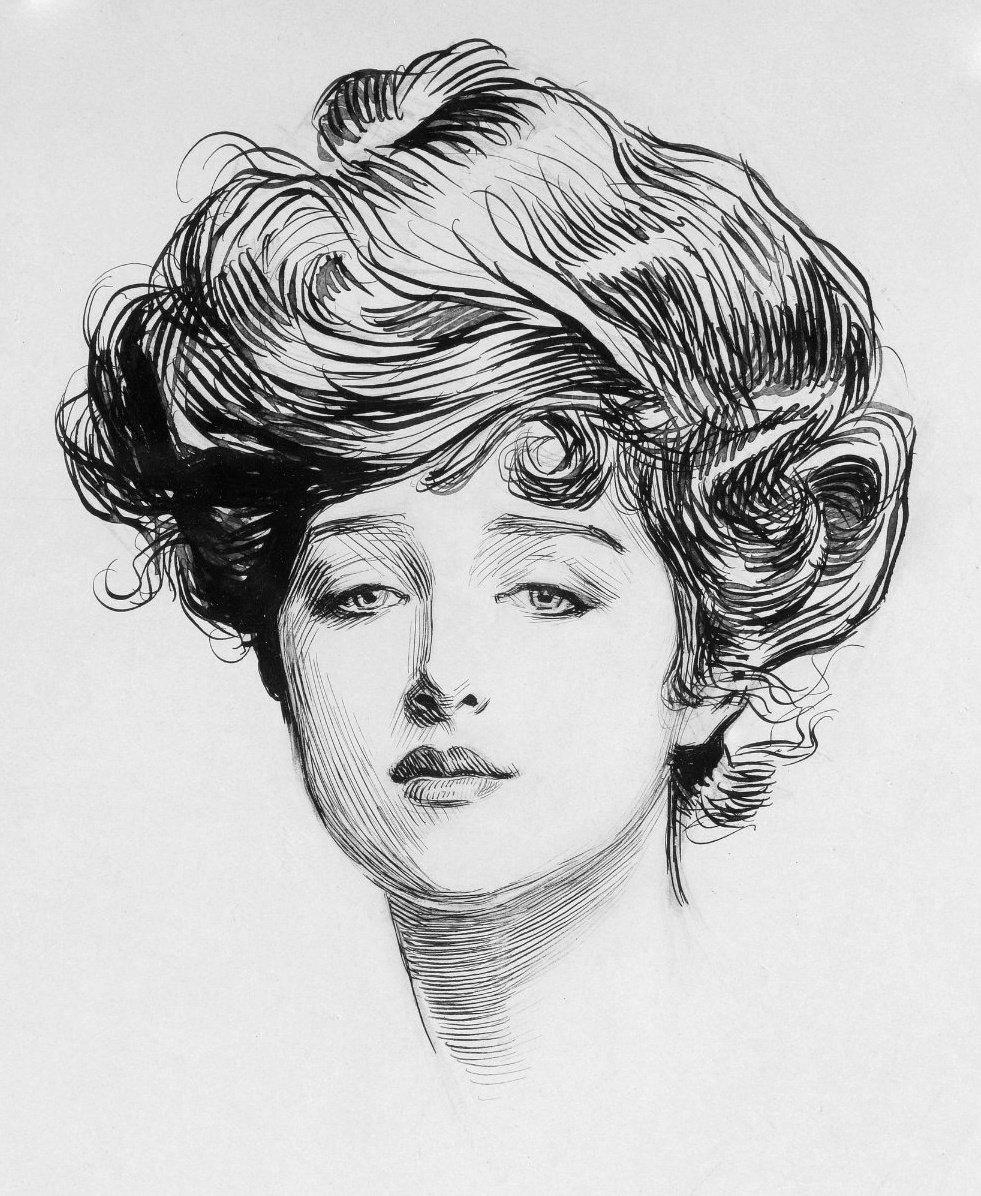
Perhaps more important than any specific style elements was the attitude that the Gibson Girl embodied. She was a blend of traditional and progressive ideas about femininity. She was active, participating in sports like tennis and cycling, yet always maintained her poise and grace. The Gibson Girl was not just a style but a lifestyle.
The Gibson Girl's influence went beyond fashion and beauty standards. She became a symbol for a new type of woman who was entering the workforce, getting an education, and demanding the right to vote. She was a socially acceptable vision of a woman who was both independent and still conventionally attractive, making her a palatable role model for young women at the time.
The Gibson Girl set the standard for beauty and fashion for years to come, influencing styles well into the 1910s and beyond. As World War I approached and societal norms began to shift further, the Gibson Girl began to fade from prominence, but her impact remained. She paved the way for flappers of the 1920s, and even today, the Gibson Girl is often referenced in discussions about the evolving roles and representations of women in American society.
Pompadour
The pompadour is a hairstyle that has a rich and varied history, spanning several centuries and crossing multiple cultural boundaries. Named after Madame de Pompadour, the chief mistress of French King Louis XV, the style has been adopted and adapted by both men and women throughout history.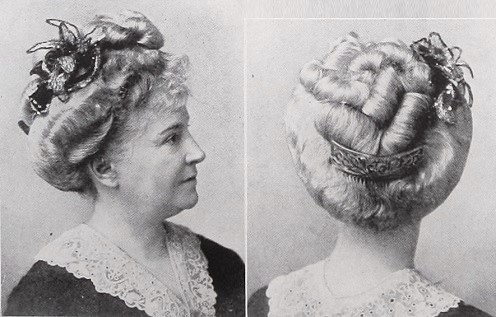
Originally, the pompadour was associated with aristocratic European women in the 18th century. The style involved sweeping the hair away from the face and piling it high on the head, often over cushions or even small wire cages to give it height and volume. Over time, the style evolved, losing its excessive height but maintaining its basic structure.
In the early 1900s, especially during the Edwardian era, the pompadour enjoyed renewed popularity among women. It was often worn as part of the Gibson Girl look, signifying the idealized American woman of the era. Later, in the 1940s and 1950s, the pompadour became popular among men, especially in the greaser subculture. The men's version involved combing the hair back away from the forehead, with the use of plenty of pomade to hold it in place.
Over the years, the pompadour has seen many variations:
- Classic Pompadour: The hair is swept upwards from the face and styled over the forehead in a roll.
- Short Pompadour: A modern, less dramatic version with shorter sides and less volume on top.
- Psycho-billy Pompadour: A hybrid style combining the classic pompadour and a Mohawk.
- Female Pompadour: Women also wear pompadours, sometimes incorporating braids or twists.
The pompadour has been a staple in various subcultures and communities. In the 1950s and '60s, it was associated with the rock 'n' roll culture, thanks to icons like Elvis Presley. The style has also been popular in the Latino and African American communities, each adding their own unique twist to the classic look.
Today, the pompadour continues to be a popular choice for those looking for a stylish yet timeless haircut. Various adaptations make it suitable for all hair types and lengths. From the classic to the quiff pompadour, this style has proven to be highly versatile and adaptable.
If you'd like to try your hand at an Edwardian Hair style, check out "5 Ways to Make an Edwardian Gibson Girl Updo."
Merry Widow Hat Influence
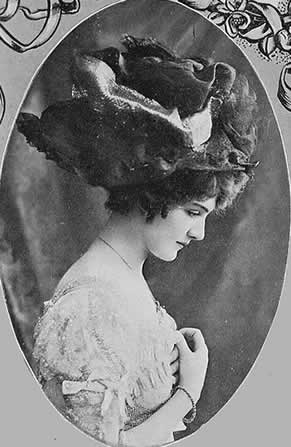
Merry Widow Hat is an iconic fashion item that gained popularity during the early 20th century, particularly around the Edwardian era. Its name comes from the operetta "The Merry Widow," composed by Franz Lehár, which debuted in 1905. The operetta was an immense hit, not just musically but also as a fashion influencer.
The Merry Widow Hat was known for its extravagant size and decoration. It often featured a broad brim, sometimes up to two feet in diameter, and was heavily adorned with trimmings like feathers, ribbons, lace, and even whole stuffed birds. The hat was typically worn tilted to one side and was considered a statement piece that signaled both fashion consciousness and social status.
The size and style of the Merry Widow Hat had a direct influence on women's hairstyles of the time. Due to the large brim and the need for the hat to sit securely, hairstyles were adapted to accommodate it. Women often wore their hair in voluminous styles, like the pompadour or a high chignon, to balance the size and weight of the hat. These upswept hairstyles allowed the hat to sit more securely and also presented a harmonious aesthetic by matching the hat's extravagance.
The Merry Widow Hat was not just a fashion item; it was a social phenomenon. Wearing one was often considered a sign of affluence and good taste, and women would go to great lengths to acquire the most opulent hats possible. However, this fashion trend was also met with some criticism. The hats were often so large that they obstructed views in public places like theaters, leading to social debates about the appropriateness of such extravagant fashion.
As World War I approached, the Merry Widow Hat began to lose its popularity. The social climate started to change, and extravagant displays of wealth became less appropriate. The large and ostentatious hat was replaced by more subdued and practical headwear, better suited for the changing times. However, its impact on fashion, especially on hairstyles, was significant.
Natural Waves and Curls
Curled hair was in vogue, and women often used heated curling irons to create ringlets or waves. These curls were often gathered into low chignons or simply left to cascade down for evening events.
Center Parts and Chignons
Another prevalent hairstyle was a center part with hair pulled back into a low chignon or bun. This was a simpler, more subdued look often seen in day-to-day life. It was also more manageable compared to the higher, more elaborate hairstyles.
Hair accessories like combs, pins, and tiaras were used to decorate and hold these elaborate hairstyles. Often these accessories were bejeweled and added an extra layer of sophistication to women's attire.
The hairstyles from 1900 to 1910 were characterized by their elegance, complexity, and adherence to social norms of the time. They reflected the fashions and social attitudes of the Edwardian era, placing an emphasis on femininity and refinement. As the decade closed, the world was on the cusp of significant changes, both socially and culturally, which would eventually be reflected in more practical and liberated hairstyles in the years to come.
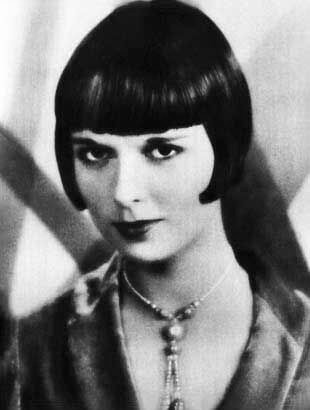
The bob cut has its origins in the early 20th century but became extremely popular in Western countries during the 1920s, a decade marked by significant social change and the push for women's rights. The bob was seen as a rebellious and liberating departure from the long, flowing locks that were traditionally associated with femininity.
During the Roaring Twenties, the bob became almost synonymous with the flapper lifestyle. Flappers were young women known for their energetic freedom, embracing a lifestyle that went against the norms of the repressive Victorian era. They wore short skirts, listened to jazz, and showcased their bobbed hair as a sign of modernity and independence.
The bob has seen many iterations and adaptations over the years. The "pageboy," "lob" (long bob), and "shaggy bob" are just some of the various styles. In the 1960s, Vidal Sassoon modernized the bob, giving it a more geometric and structured look. More recently, asymmetrical bobs and "wob" (wavy bob) styles have gained popularity.
From actresses like Louise Brooks in the '20s to fashion-forward celebrities like Victoria Beckham, many notable women have sported the bob and contributed to its enduring appeal. It has transcended cultural and racial boundaries, being adopted and adapted by women of all backgrounds.
The bob remains a versatile and modern choice, suitable for women of all ages. It has become a "classic" haircut that continues to evolve while maintaining its core characteristics of simplicity and elegance.
The bob cut reflects the evolving roles and freedoms of women throughout modern history. From its early days as a symbol of rebellion to its current status as a classic and versatile look, the bob has endured as one of the most significant and adaptable hairstyles in history
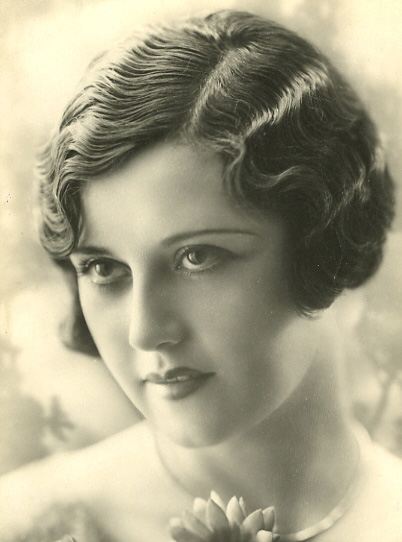
Finger Waves: This technique was highly popularized by Hollywood. The s-shaped curves were created by pinching the hair between the fingers and combing alternating sections in different directions. It required a lot of skill and was often left to professional hairdressers.
Soft Curls: Soft, luxurious curls often framed the face and were typically medium-length. Actresses like Jean Harlow and Bette Davis popularized this feminine look.
Bob Cut: The bob evolved from its flapper origins in the 1920s to become softer and more elegant. Some variations included the curled-under bob or the slightly longer "lob" (long bob).
Chignon: This elegant, low-hanging bun was popular for formal events. It was often adorned with hairpins or other accessories for extra flair.
Curls: These were particularly popular because they could be done at home. Wet hair was twisted into small ringlets and pinned to the scalp until dry, after which the pins would be removed to reveal tight curls..
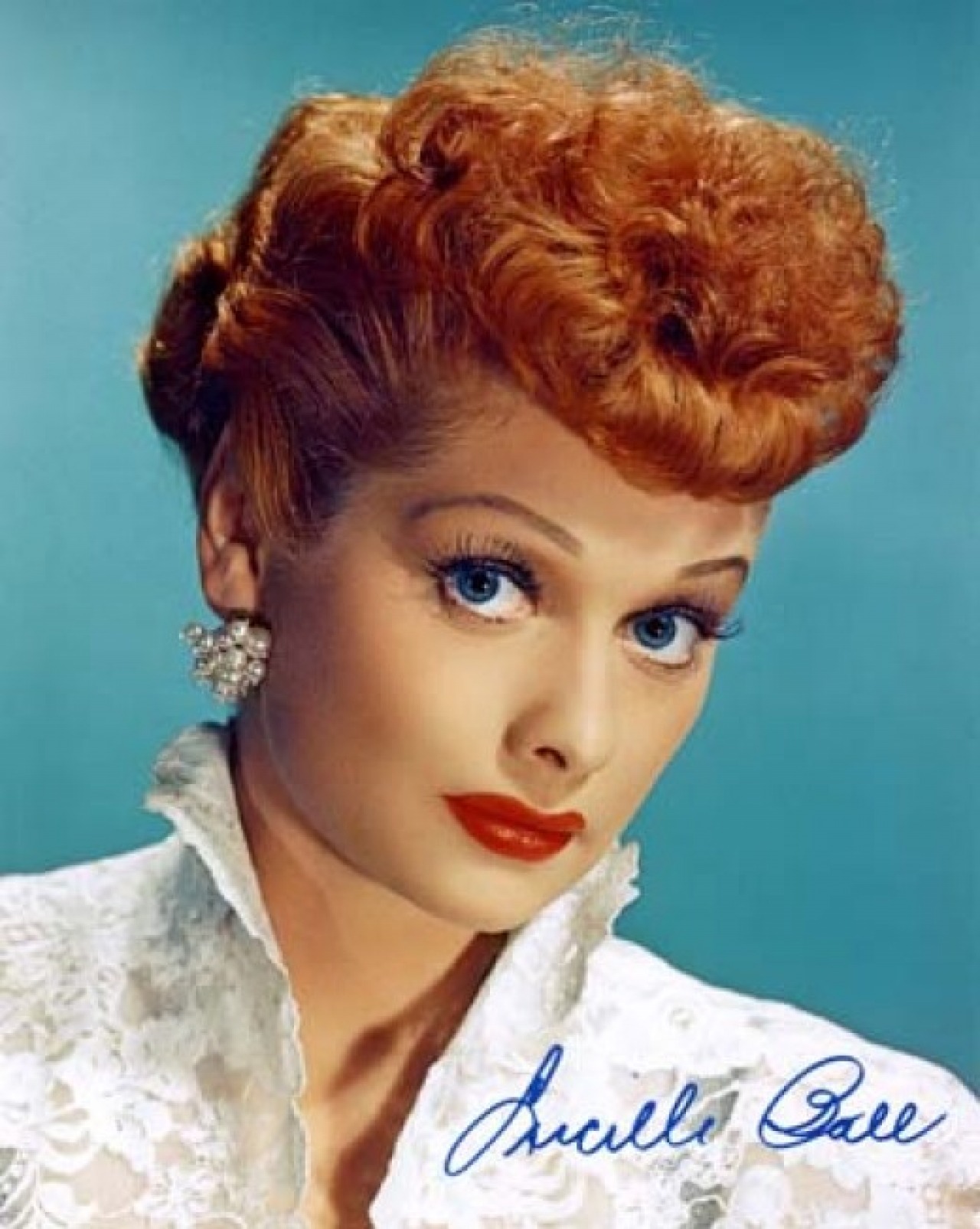

The beehive hairstyle is one of the most iconic looks of the 1960s. Known for its dramatic height and conical shape resembling a beehive, this hairstyle was a symbol of elegance and sophistication during its heyday. It continues to be a go-to look for special occasions and has been adapted in various ways over the years.
The beehive was created in 1960 by Margaret Vinci Heldt, a Chicago-based hairstylist. She was inspired by a fez-like hat and aimed to create a hairstyle that would allow the hat to sit neatly on top. The result was a unique, piled-high hairstyle that took the fashion world by storm.
The beehive quickly gained popularity among Hollywood celebrities and musicians. Notable figures like Audrey Hepburn in "Breakfast at Tiffany's" and singer Dusty Springfield sported the beehive, cementing its place in pop culture. The style was often associated with glamour and high fashion but was versatile enough to be adapted for everyday wear.
Achieving the beehive requires teasing or "ratting" the hair to create volume at the crown of the head. The teased hair is then smoothed over and shaped into a tall, rounded cone. It is often secured with hairpins and hairspray to maintain its structure. Some variations include incorporating elements like curls, bangs, or ribbon for added flair.
The beehive was more than just a fashion statement; it was a marker of the changing times. The 1960s were a period of social and cultural upheaval, and women were increasingly breaking away from traditional roles and expectations. The beehive, with its height and prominence, could be seen as a manifestation of women's desire to stand out and assert their independence.
While the beehive is most closely associated with the '60s, it has never entirely gone out of style. It has seen periodic revivals in later decades and has been sported by modern celebrities like Amy Winehouse, Adele, and Beyoncé. Fashion designers and hairstylists often revisit the beehive when looking to evoke a sense of retro glamour.
The Feathered Flip was a quintessential hairstyle of the 1970s that gained immense popularity during the decade. Known for its soft, flowing layers and flipped-out ends, the Feathered Flip became a symbol of the era's "groovy" vibe and a cornerstone of its beauty aesthetic. Here's a deeper look into this iconic hairstyle:
The Feathered Flip involved a layered cut that gave volume and texture to the hair. The "feathering" technique created a soft, blended look without harsh lines. The hair was generally longer at the back and shorter at the front, with the layers adding dimension. The ends of the hair were often flipped outwards, either using curlers or a round brush and blow dryer, giving the style its signature "flip."
Farrah Fawcett, one of the original cast members of the television show "Charlie's Angels," is often credited with popularizing the Feathered Flip. Her golden locks, styled in a dramatic feathered look, became one of the defining images of '70s glamour. The hairstyle was emulated by women across America and became synonymous with youthful freedom and effortless beauty.
The 1970s were a time of cultural shifts, social movements, and changes in fashion and beauty norms. The Feathered Flip aligned well with the era's ideals of liberation and self-expression. It became a mainstream look but also found a place in various subcultures, from the disco scene to the burgeoning feminist movement.
While the Feathered Flip looked effortlessly chic, it did require some maintenance. Achieving the perfect flip often involved using hot rollers or a curling iron, and maintaining the feathered layers required regular trims. However, the style was versatile, allowing for various adaptations, including different lengths and the incorporation of bangs.

The mullet was experiencing a resurgence in popularity, particularly among younger generations and within various subcultures. Known for its "business in the front, party in the back" aesthetic, the mullet is a hairstyle characterized by shorter hair at the front and sides and longer hair at the back. It gained significant notoriety in the 1980s and became associated with various music scenes, including rock and country, as well as with a certain kind of working-class ethos.
In recent years, the mullet has been embraced as a form of retro-nostalgia and ironic fashion. Celebrities like Miley Cyrus, Rihanna, and Billie Eilish have sported variations of the mullet, thereby helping to bring it back into the public eye. The rise of social media platforms like TikTok and Instagram has also played a role in the hairstyle's comeback, with users showing off their mullets and even offering tutorials on how to achieve the look.
The modern revival of the mullet is often seen as a rejection of more conventional beauty standards and a nod to individualism and countercultural attitudes. While the mullet is still met with a degree of irony and humor, its reemergence reflects broader shifts in fashion and culture, where styles from previous decades are recycled and reimagined in new contexts.
Fashion is cyclical, and what was once considered outdated can become trendy again. The mullet is no exception, and its comeback highlights the ever-changing nature of style and the influence of nostalgia on contemporary fashion.

The '90s were a decade of diversity in fashion and hairstyles, but nothing captured the zeitgeist like "The Rachel," named after Jennifer Aniston’s character on "Friends." The "Rachel" haircut is a layered, voluminous hairstyle named after the character Rachel Green, played by Jennifer Aniston on the popular TV show "Friends," which premiered in 1994 and ran until 2004. This hairstyle became an instant cultural phenomenon and is often cited as one of the most iconic hairstyles of the 1990s.
The hairstyle was created by Chris McMillan, Jennifer Aniston's longtime hairstylist. The look was characterized by its face-framing layers, volume at the crown, and a distinct, almost feathered, appearance. As "Friends" gained in popularity, so did the "Rachel." It wasn't long before women were flooding salons with photos of Jennifer Aniston, asking for the same haircut
The "Rachel" wasn't just a hairstyle; it became a symbol of the '90s era, encapsulating the decade's relaxed yet stylish aesthetic. It resonated with young women who were navigating careers, relationships, and friendships, much like the character Rachel Green. Magazines like Cosmopolitan and Vogue featured the haircut, and it was discussed on various fashion TV shows, amplifying its influence even more.
Interestingly, Jennifer Aniston herself has expressed some ambivalence about the hairstyle that bears her character's name. In various interviews, she's called it one of the ugliest haircuts she's ever had and mentioned how difficult it was to maintain. Despite this, she also acknowledged its significant cultural impact
While the "Rachel" fell out of mainstream fashion as new trends emerged, it still holds a special place in pop culture history. It serves as a nostalgia-inducing emblem of a particular time in television and fashion, and it occasionally resurfaces in modern variations, often as an homage to the '90s era.
The Pixie Cut is a short hairstyle where the hair is cropped in layers, typically so as to create a slightly tousled effect. It's a low-maintenance, chic haircut that has been popular among women (and occasionally men) for many years. The Pixie Cut gained significant attention in the 1960s, largely due to the influence of British supermodel Lesley Lawson, widely known by the nickname Twiggy.![]()
Twiggy burst onto the fashion scene in the mid-1960s, and her distinctive look—defined by her waifish figure, large eyes accentuated by heavy makeup, and, of course, her blonde Pixie Cut—became emblematic of the Swinging Sixties. Her androgynous look challenged traditional gender norms and beauty standards, making her one of the most iconic faces of the decade. Her hairstyle became so popular that it was emulated by women all around the world, becoming synonymous with modernity, liberation, and a kind of youthful audacity.
Other prominent figures who sported the Pixie Cut during the '60s included actress Mia Farrow, who famously had her hair cut by Vidal Sassoon for her role in the film "Rosemary's Baby." This was a groundbreaking moment, as it was rare for a leading lady in Hollywood to sport such a short haircut. Yet, the daring move paid off, and the Pixie Cut became cemented as a hairstyle that could be both elegant and avant-garde.
The Pixie Cut has seen numerous revivals over the years, with various celebrities like Halle Berry, Natalie Portman, and Anne Hathaway opting for the style and putting their own twists on it. However, its roots in the countercultural movements and fashion revolutions of the 1960s give it a lasting legacy as one of the most iconic hairstyles of all time. See the different Pixie cuts of today.
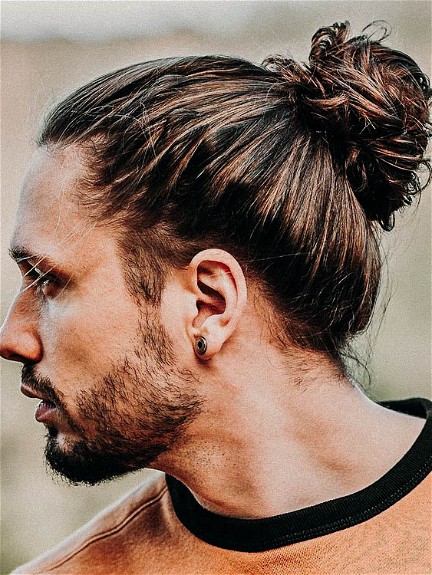
The 2010s were marked by the breaking down of gender norms, and hairstyles were no exception. The Man Bun, popularized by celebrities and hipsters alike, became a cultural talking point, reflecting broader conversations about masculinity and self-expression.
The Man Bun is a contemporary hairstyle that gained widespread popularity in the 2010s, although its origins can be traced back to various cultures and historical periods. Essentially, the Man Bun involves gathering the hair at the top or back of the head and securing it into a bun. The style became popular as traditional norms around masculinity began to shift, opening up more room for men to experiment with longer hairstyles.
Though the Man Bun became a trend in the 2010s, similar hairstyles have been worn by men in various cultures throughout history. For instance, Samurai warriors in Japan wore a form of the Man Bun, called the "chonmage," for centuries. In ancient China, men often wore their hair in a bun as a mark of scholarly distinction. In modern times, the Man Bun became a part of countercultural styles, particularly within bohemian, artistic, and hipster communities.
The Man Bun reached the peak of its popularity in the mid-2010s and was seen on a number of celebrities, including actors like Jared Leto and Leonardo DiCaprio, and athletes like David Beckham. These high-profile endorsements helped the style break into the mainstream, even if it was sometimes met with mockery or controversy.
The Man Bun became a talking point in broader discussions about masculinity, gender norms, and personal expression. It was both praised for its departure from traditional, shorter men's hairstyles and criticized by those who saw it as emblematic of a certain kind of pretentious subculture. Either way, the style sparked conversations and allowed men more freedom to experiment with their appearances.
The Man Bun has several variations, including the "Top Knot," where only the top portion of the hair is gathered into a bun, leaving the rest of the hair to hang freely. There's also the "Low Bun," situated at the nape of the neck, and the "Messy Bun," which is a more casual, less structured version.
Whether loved or loathed, the Man Bun a cultural phenomenon that speaks to evolving ideas about masculinity and self-expression. While its popularity may wax and wane, it remains a significant marker of a period when traditional norms were being questioned and redefined.
Conclusion
The hairstyles we've covered are icons of their respective eras, signifying broader social, cultural, and even political currents. As we look ahead, it's exciting to consider what the future holds for hairstyles, as they will undoubtedly continue to serve as markers of the times and the people who live through them.
Comments will be approved before showing up.
Tha Quality was fantastic❗❗❗
Used grease or lard bucket was carried under rear axle to periodically grease wheel hubs. Very good video.
I'm super impressed how quickly the print got to Canada and the quality is worth every penny. Thank you so much, Gordon Parks is a hero to my partner and I'm sure he will love this surprise
Received as a gift and could not be happier with the quality of the print. Shipping container ensure this arrived in perfect condition.
Love the simplicity and vintage feel of this print. Plus- prickly + beauty theme.
Wow. What an incredible photograph, and I love the story behind it as well. Seller does excellent work, and I couldn't be more pleased.
Amazing photograph and beautifully reproduced. Excellent work and shipped quickly. Thanks so much.
Beautiful photo and amazing quality!
5 stars review from Claire
Image quality and the extent to which the image was packaged securely was perfect. Could not be happier with the product.
This image along with much of Thomas Hines' work is incredibly powerful. The brutality faced by these children makes our everyday hardships seem frivolous.
5 stars review from Pjewc191
Great item. Packed well for shipping. Shipped quickly.
arrived quickly and looks great!
Classic. Framed it, and hung it up.